Five Things You Didn’t Know About the “I Have a Dream” Speech
Few words echo through history with the conviction and power of the “I Have a Dream” speech, given by Martin Luther King, Jr. 55 years ago today. Frequently ranked as the top speech in American history by polls and scholars, the address served as the defining moment of the March on Washington for Jobs and Freedom. King and other organizers mounted the march in support of civil rights legislation initiated by President John F. Kennedy. All of that could be considered common knowledge; here are a few things that you might not know about the speech and the events surrounding it.
The Speech.
1. It Wasn’t King’s First “Dream” Speech
When you look back at Dr. King’s oratorical history, it’s obvious that he liked to use dream allusions and imagery. It’s not difficult to understand why, as the civil rights struggle is essentially a dream of equality. King used that theme in a speech he gave to the NAACP in 1960 called “The Negro and The American Dream” in which he called America “a dream yet unfulfilled.” The speech emphasized that contributions that black Americans had already made and could continue to make and decried institutional racism, noting, “The primary reason for uprooting racial discrimination from our society is that it is morally wrong. It is a cancerous disease that prevents us from realizing the sublime principles of our Judeo-Christian tradition. It relegates persons to the status of things.” King would use the “dream” concept in further speeches in North Carolina in 1962 and Detroit in 1963, among other occasions.
2. The Speech Caught the Attention of the FBI
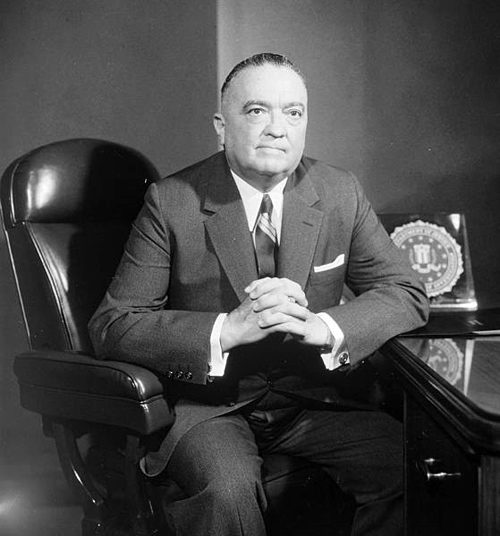
From 1956 to 1971, the FBI ran a series of operations that sought to dismantle domestic political groups. The umbrella name was COINTELPRO, which was derived from Counter Intelligence Program. Although the projects began by targeting the Communist Party in the United States, they expanded widely and involved infiltration, harassment, and, at times, violence directed against groups as diverse as the civil rights movement, feminist organizers, the Black Panther Party, the KKK, Puerto Rican independence activists, and more. King himself was a specific and frequent target of investigations and wiretaps as some people inside the Bureau viewed him as subversive. In Tim Weiner’s 2012 book, Enemies: A History of the FBI, Weiner offers a quote from FBI director J. Edgar Hoover in the wake of the “Dream” speech in which he says, “We must mark [King] now if we have not done so before, as the most dangerous Negro of the future in this nation from the standpoint of communism, the Negro, and national security.” The operation was overtly halted in 1971 after it was exposed by the activist group the Citizens’ Commission to Investigate the FBI.
3. It Made History in 17 Minutes
The speech itself took King 17 minutes to deliver. It has an official count of 1,667 words. That’s just over six times longer than Lincoln’s “Gettysburg Address,” which is widely considered King’s model for “I Have A Dream.”

4. The Speech Had Other Unshakable Lincoln Connections
The opening of the “I Have A Dream” speech includes the words “Five score years ago,” followed by a direct reference to the signing of the Emancipation Proclamation, the document that freed all the enslaved people in the south. Slavery officially ended in the United States with the passage of the Thirteenth Amendment in 1865. Of course, the speech was delivered at the incredibly appropriate location of the steps of the Lincoln Memorial. Today, a marble marker on the steps memorializes the occasion.
5. The Speech Immediately Changed King’s Life
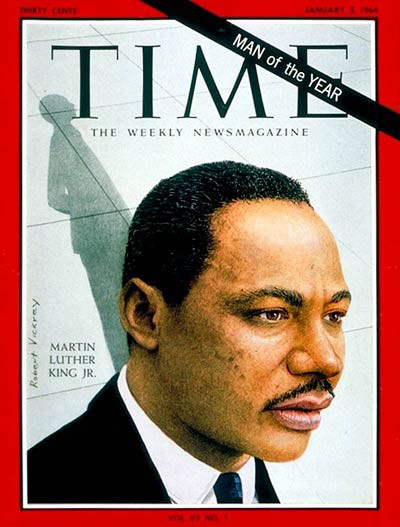
Scholars, journalists, and politicians have long discussed what the speech meant for the overall civil rights movement and what it continues to mean to people today. The immediate aftereffect for King is that it launched him into the stratosphere of political leadership in America. Not that he hadn’t already made an enormous reputation for himself, but in the time that followed, King became Time’s Man of the Year for 1963 and the youngest person awarded the Nobel Peace Prize in 1964. Though his life was unfortunately ended less than five years after delivering the speech, his legacy has proven immortal. The man is gone, but his dream lives.
Cartoons: Jailhouse Jokes

George Wolfe
January 13, 1940
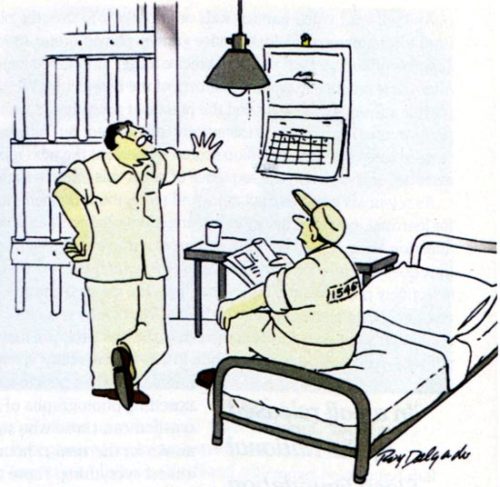
Roy Delgado
July 1, 2011

Joseph Farris
November 1, 2001

Baloo
November 1, 2000

Anderson
December 29, 1956
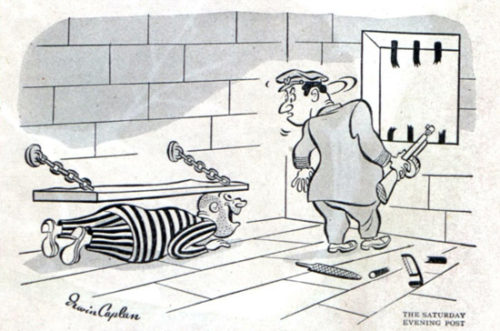
Irwin Caplan
December 15, 1945
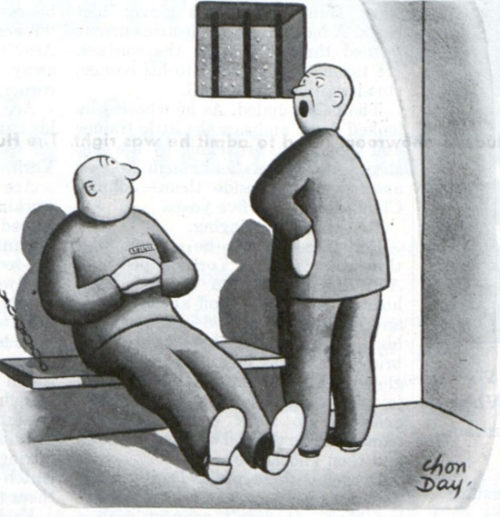
Chon Day
January 27, 1940

Rodney DeSarro
December 15, 1945